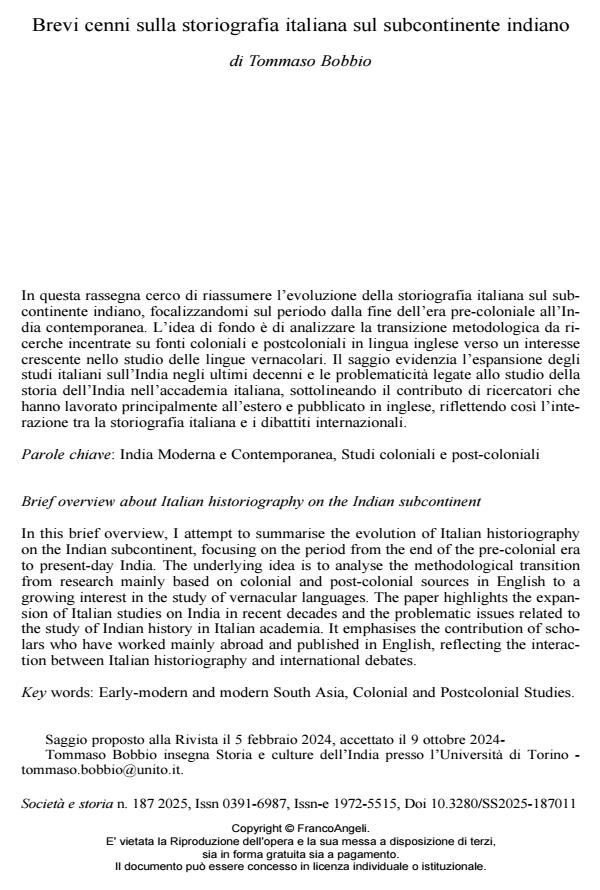Brief overview about Italian historiography on the Indian subcontinent
Journal title SOCIETÀ E STORIA
Author/s Tommaso Bobbio
Publishing Year 2025 Issue 2025/187
Language Italian Pages 8 P. 199-206 File size 36 KB
DOI 10.3280/SS2025-187011
DOI is like a bar code for intellectual property: to have more infomation
click here
Below, you can see the article first page
If you want to buy this article in PDF format, you can do it, following the instructions to buy download credits

FrancoAngeli is member of Publishers International Linking Association, Inc (PILA), a not-for-profit association which run the CrossRef service enabling links to and from online scholarly content.
In this brief overview, I attempt to summarise the evolution of Italian historiography on the Indian subcontinent, focusing on the period from the end of the pre-colonial era to present-day India. The underlying idea is to analyse the methodological transition from research mainly based on colonial and post-colonial sources in English to a growing interest in the study of vernacular languages. The paper highlights the expansion of Italian studies on India in recent decades and the problematic issues related to the study of Indian history in Italian academia. It emphasises the contribution of scholars who have worked mainly abroad and published in English, reflecting the interaction between Italian historiography and international debates.
Keywords: Early-modern and modern South Asia, Colonial and Postcolonial Studies.
Tommaso Bobbio, Brevi cenni sulla storiografia italiana sul subcontinente indiano in "SOCIETÀ E STORIA " 187/2025, pp 199-206, DOI: 10.3280/SS2025-187011